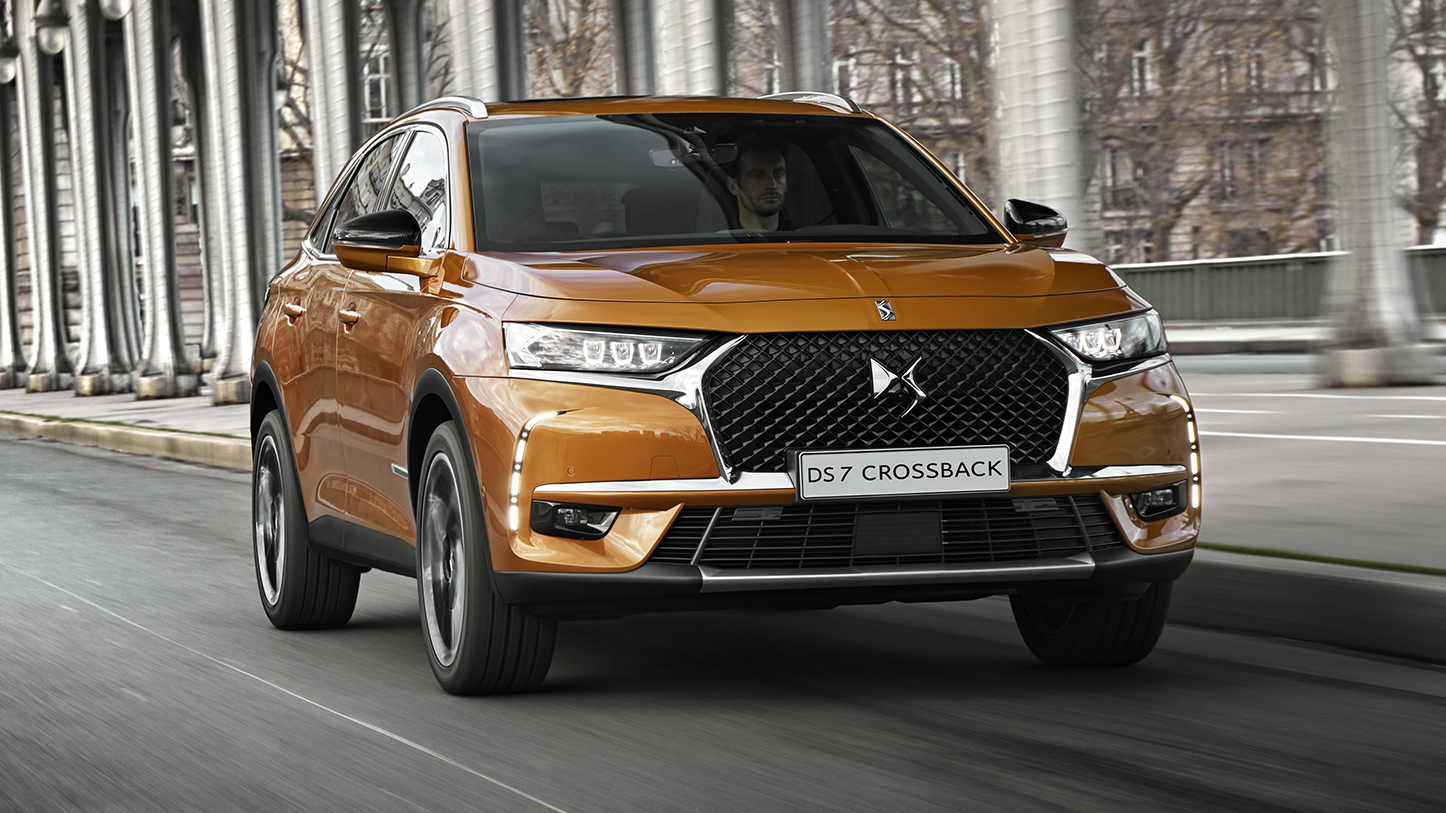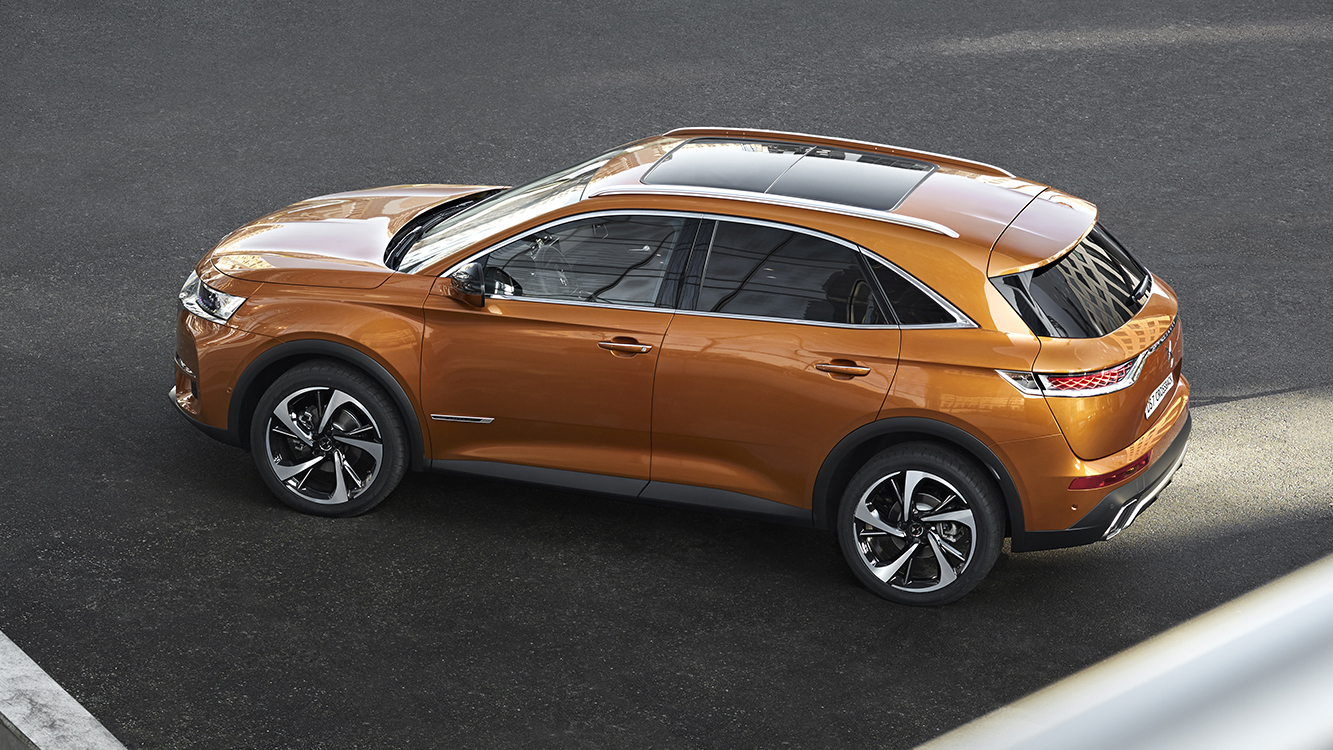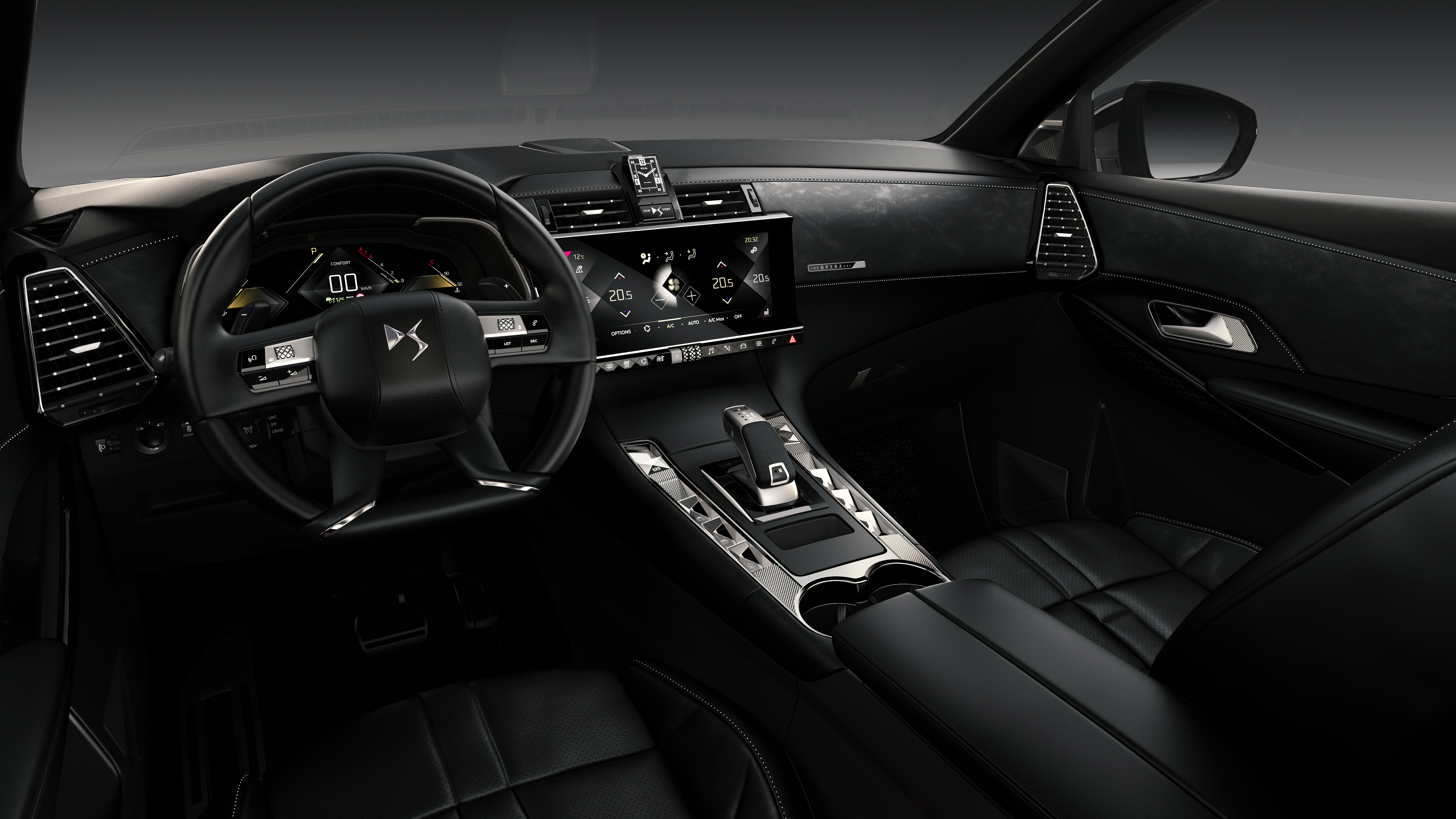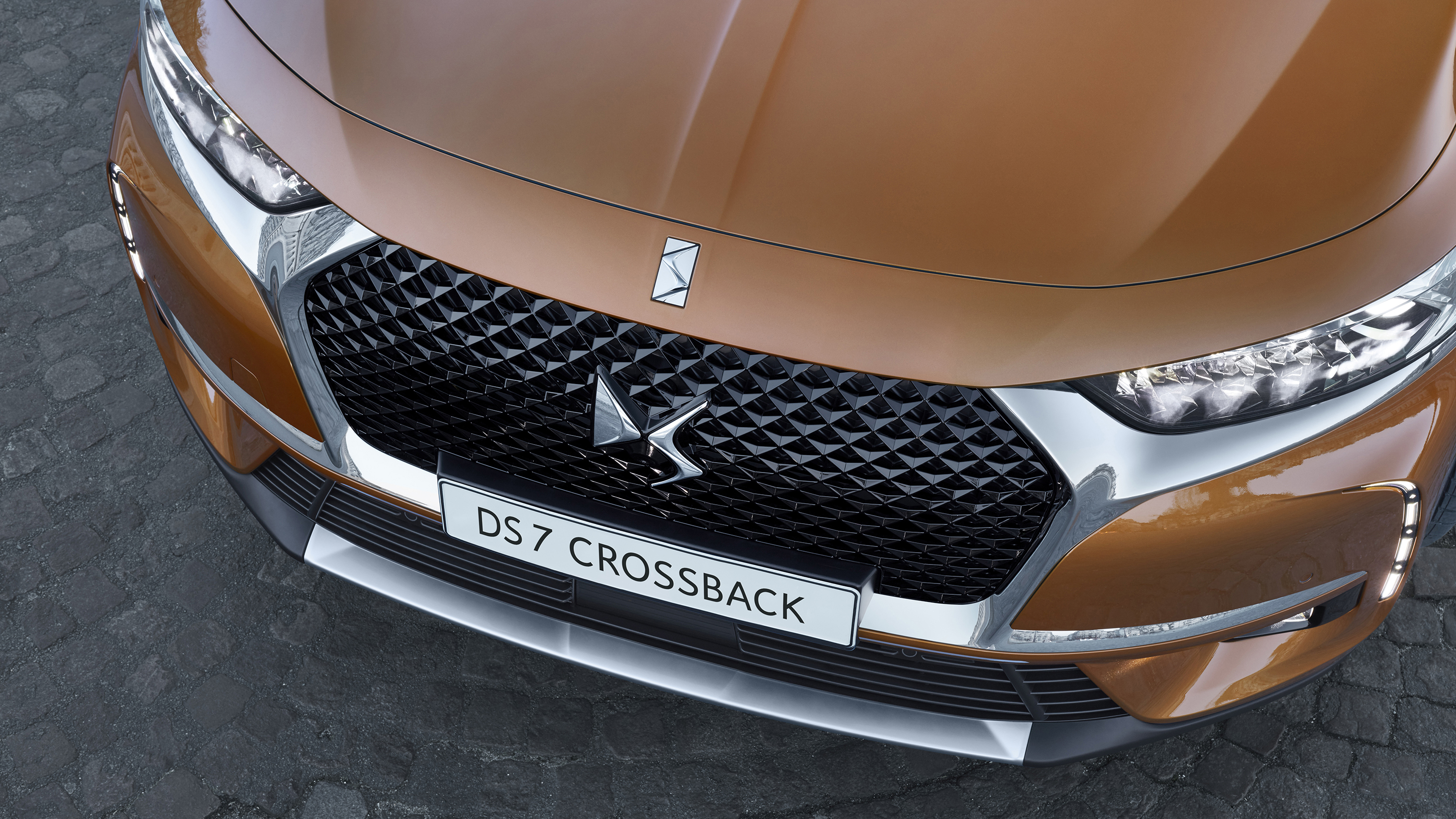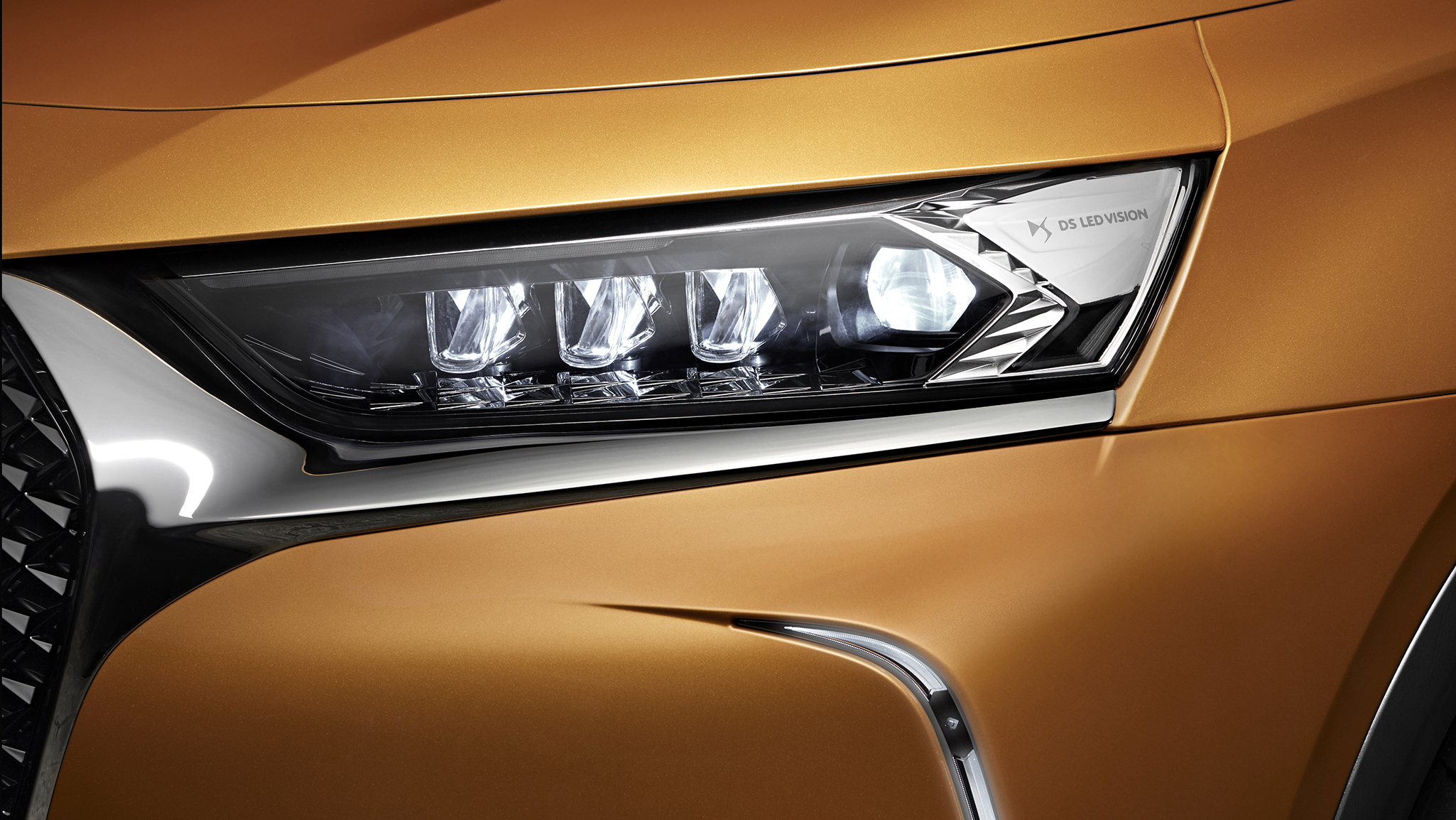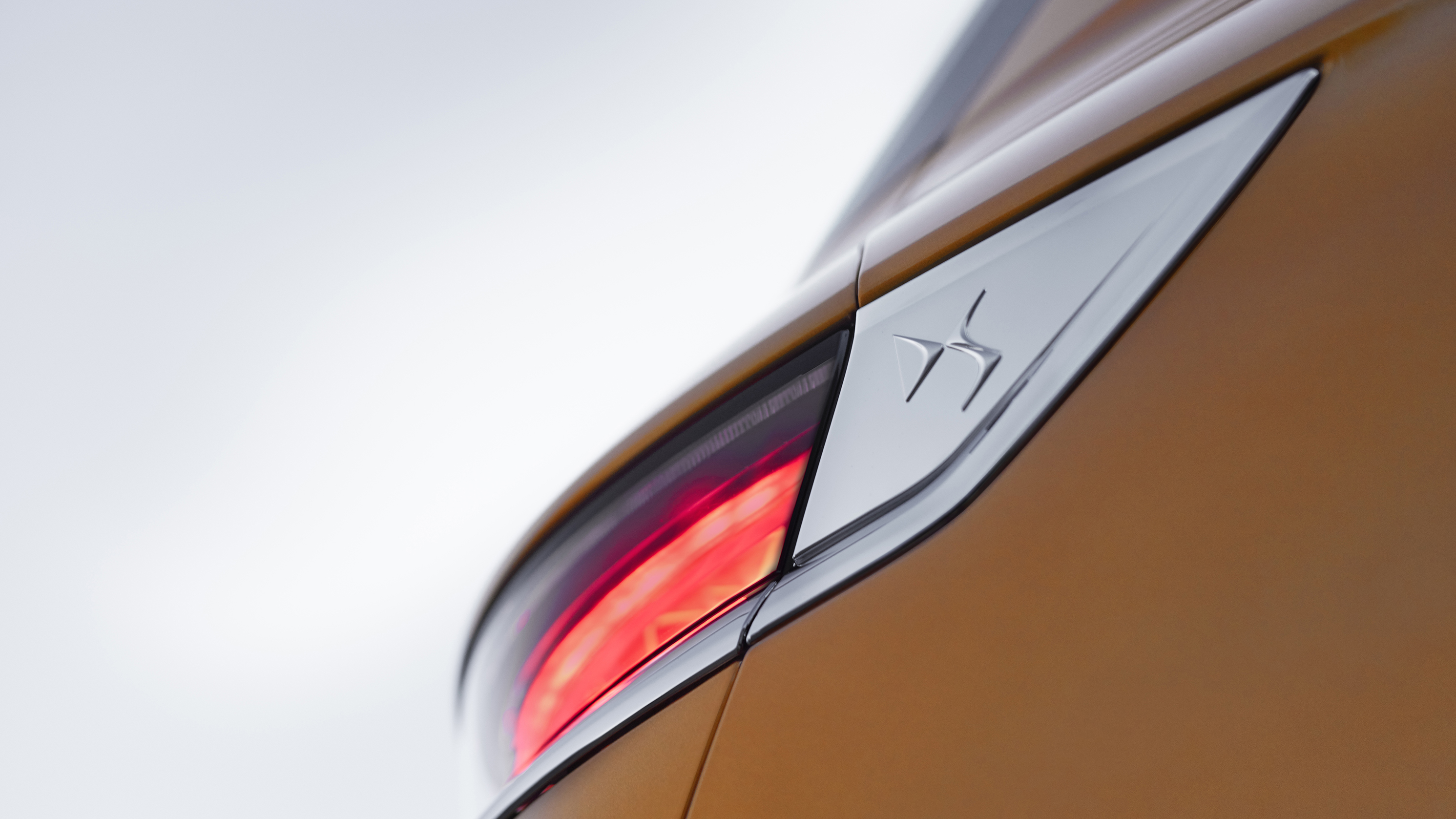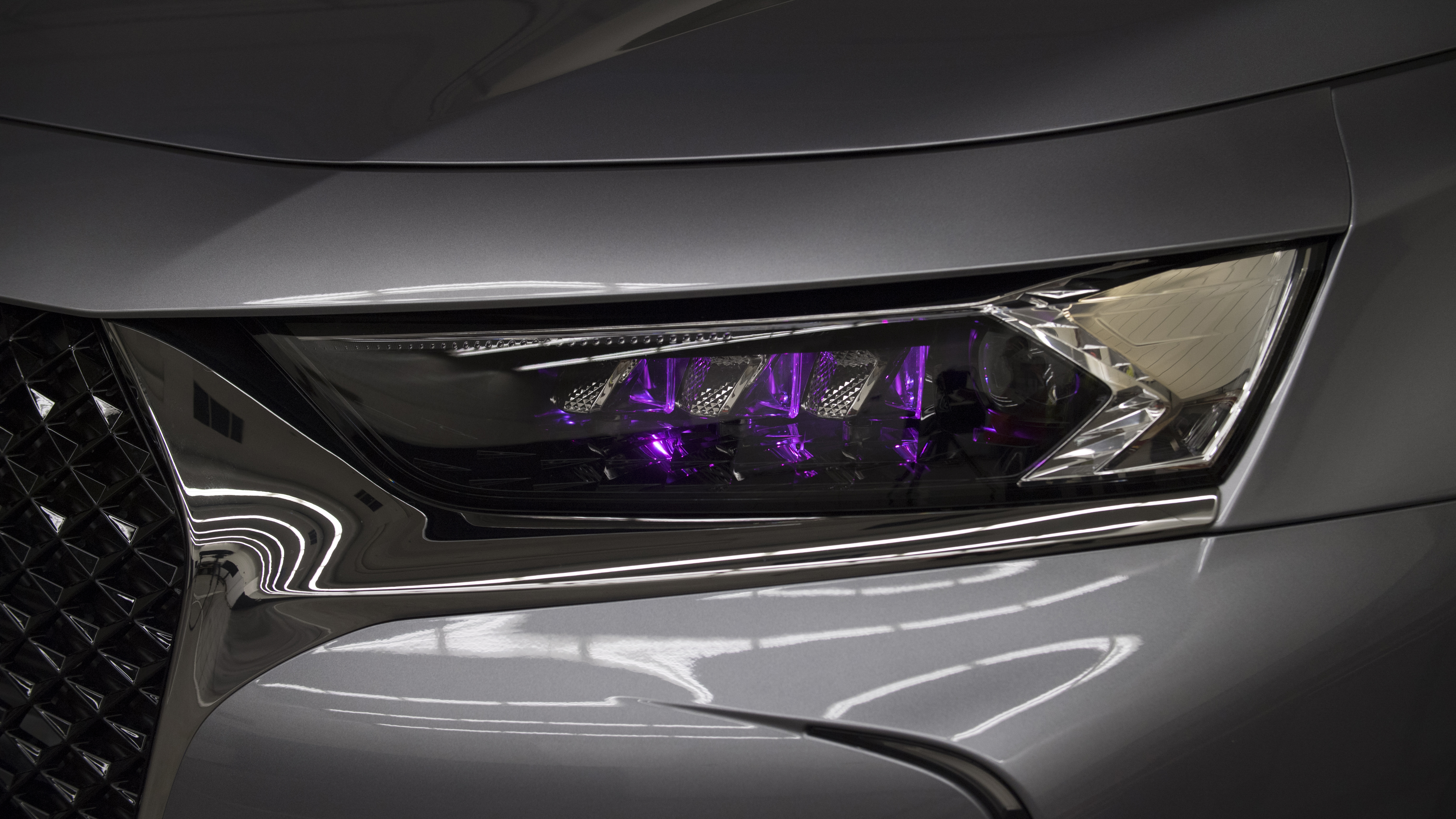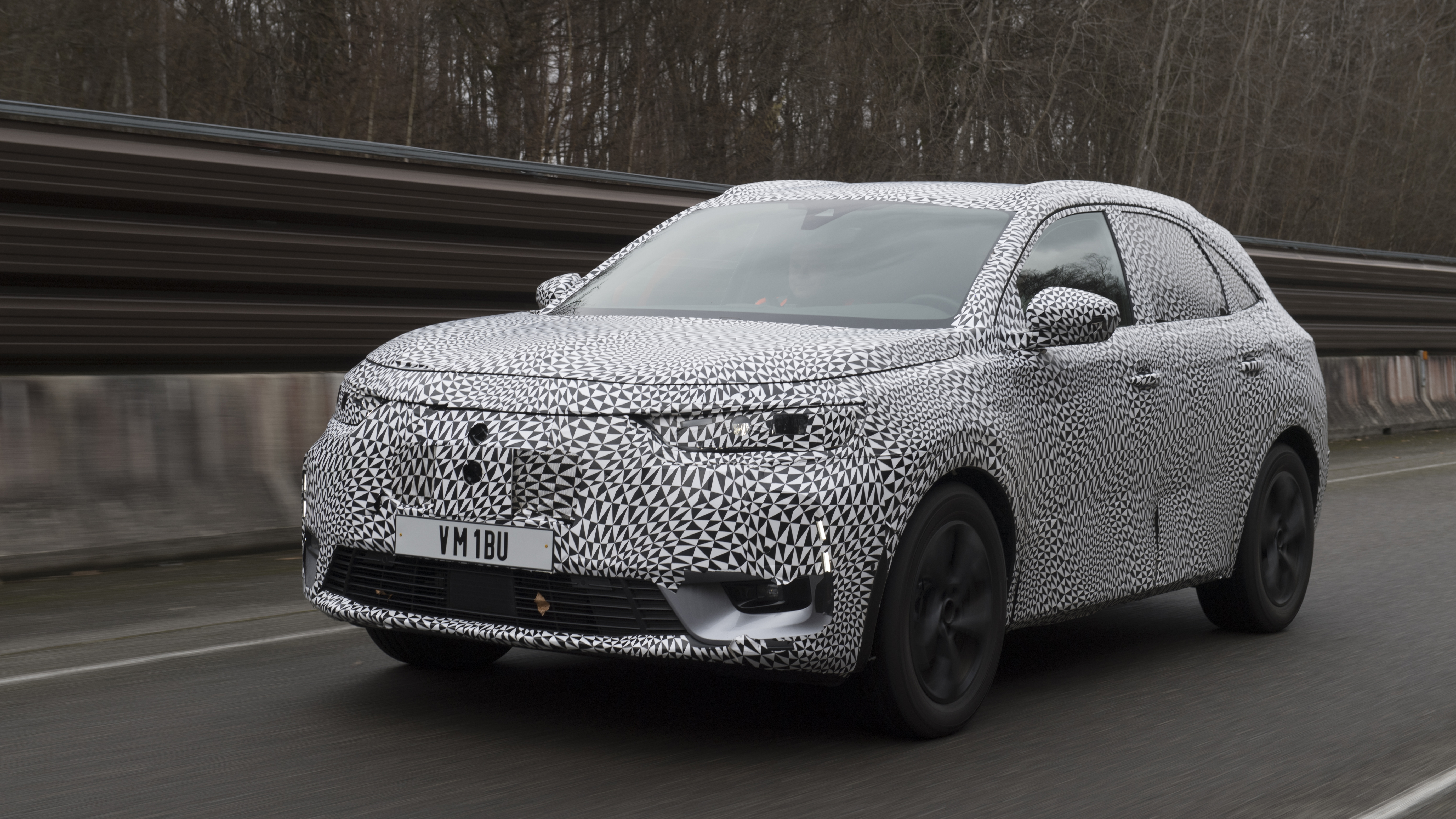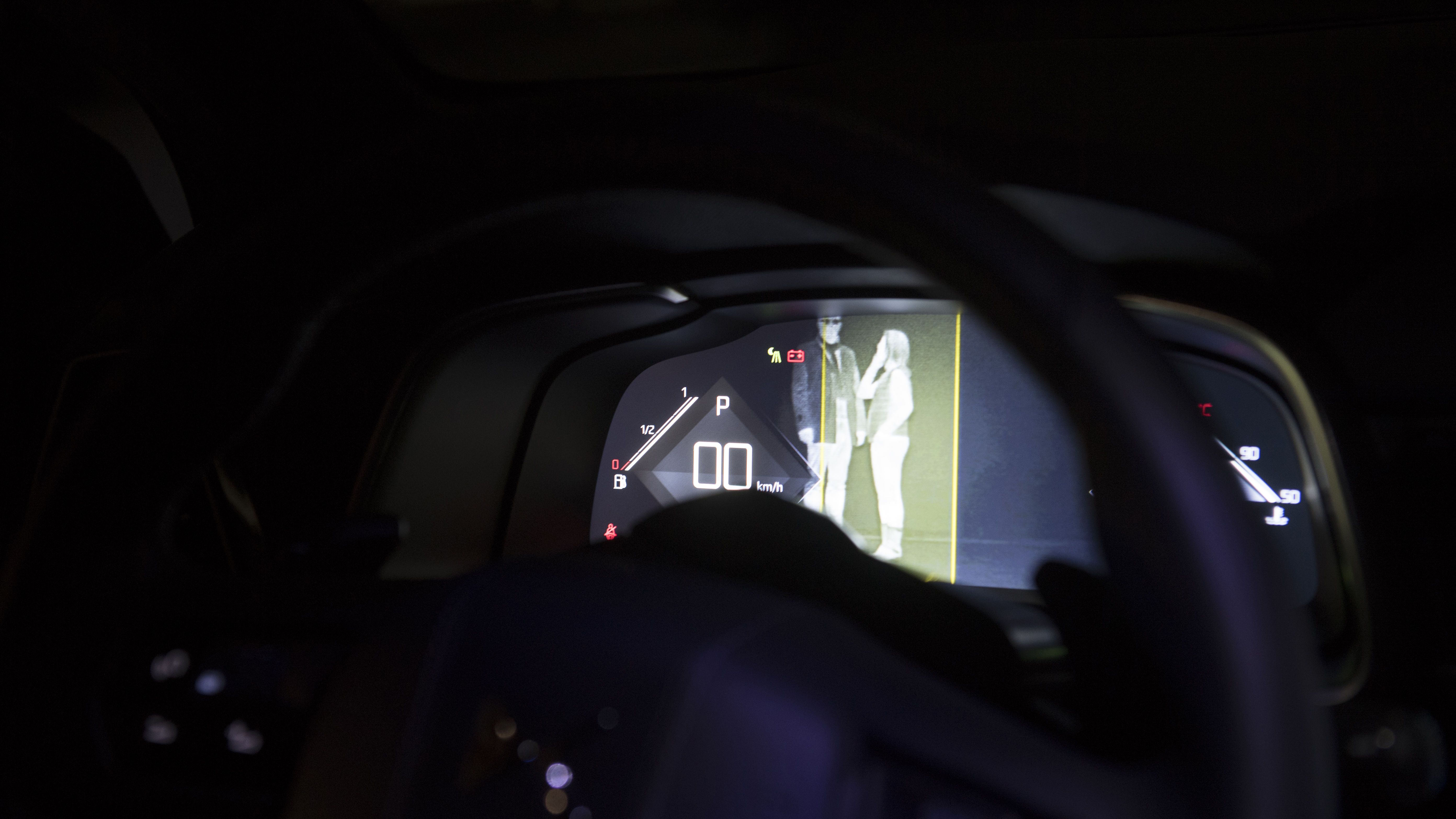
Meet the first ever DS SUV, the DS 7
New DS will compete with the Audi Q3 and Mercedes GLA. We've even had a ride
What you’re looking at here is, of course, the inaugural DS SUV. It’s called the DS 7 Crossback, and it’s the first car developed as a DS from the get go (the DS 3, 4 and 5 were Citroens first).
The headlines are thus: it sits on the same EMP2 platform as the Peugeot 3008 and 5008, and its technical specification will broadly mirror those cars. This means familiar petrol and diesel engines, including the three-cylinder PureTech turbo petrol, and popular 1.6 and 2.0-litre diesels. Some will have the new eight-speed auto, others a six-speed manual and some a choice between the two.
A plug-in hybrid will follow in 2019, a year after the car’s launch ten months from now. DS is the first PSA brand to get this (and most other) tech. It combines a 196bhp four-cylinder petrol with two 80kW electric motors – one for each axle giving all-wheel drive. DS are claiming an electric-only range of 37miles and a combined 296bhp.
Most PHEVs sandwich the electric motor between the combustion engine and gearbox, but in the DS the e-motor is downstream of the gearbox. This means greater efficiency because the e-motor doesn’t have to run through the eight-speed auto. Clever. A recharge takes four hours from a normal plug, but it also regens while you’re braking or coasting.
Then there’s DS Active Scan Suspension. Basically, predictive damping via a camera mounted behind the rear-view mirror that spies potholes in the road and gives the suspension a heads-up. It’s a bit like Mercedes’ Magic Body Control, only that system uses active springs as well as adaptive dampers. Andre Louis, Deputy Director of the DS 7 project, tells us the fact DS has “no active springs, only dampers” is quite on purpose.
“The S-Class has active springs with a hydraulic piston, but we don’t want that because they are trying to make the car flat everywhere,” he says.
“This is not our target, because we want to be smooth. Very comfortable. I think your body feels the road, and the car continues to go flat. It’s very strange for the body. I prefer to have a car that follows the road – not with big movements, but it follows the road.” At the moment, the S-Class is the only other car with this kind of system.
We have had a quick ride in the 7, although the predictive system was deactivated (we get to try it in May, Andre promises us) and the adaptive dampers locked in normal mode. There’s plainly work left to be done. Comfort’s the aim, and once the jiggle the of the pre-prod is dialled out, it should ride fairly well. Although having said that, Britain’s roads are uniquely terrible, so there’s no knowing for certain until it lands for real. What we can tell you is that the seats are comfy, and that even in the camo’d pre-prod, wind and tyre roar is pretty well contained. Eight-speed auto seems smooth, too.
Top Gear
Newsletter
Thank you for subscribing to our newsletter. Look out for your regular round-up of news, reviews and offers in your inbox.
Get all the latest news, reviews and exclusives, direct to your inbox.
While we’re being technical, the headlights are worth a mention. They aren’t matrix ones like everyone else does (where specific LEDs are blocked or deactivated to create a dark patch around a car you’re following, or one coming the other way) because DS wants a more “homogenous” light pattern (its words), and they’re not linked to the GPS like Audi’s because DS says that has its disadvantages too. But DS is, nonetheless, very proud of them.
They’re made up of a one main and three subsidiary modules. When you unlock the car, those three modules rotate through 180 degrees and light-up purple. Cool, if completely useless. Night vision à la Audi, Mercedes and similar is a first for the segment, too. Other tech on offer includes adaptive cruise and lane-keeping, semi-autonomous parking and a pretty serious FOCAL stereo. All contribute to the ‘Lounge’ effect DS is going for with the 7 – dynamic serenity, they’re calling it.
Though it’s more or less the same size as the Audi Q5 and Mercedes GLC, DS says it’s with the Q3, GLA and BMW X1 that the DS 7 will be priced to compete. In the flesh it looks (and feels) way bigger than those cars, which no doubt has its appeal. And the design is more conventional than we’ve come to expect from DS – more closely resembling the restrained Audis, VWs and Mercedes of this world than the origami mentalness of the Lexus NX, or wilful oddness of the old DS 5.
The brand has a history of doing things a bit differently, and though there are some interesting little details dotted about – the taillights are especially cool – from afar the 7 could as easily be an Audi as a DS. This is clearly deliberate, and while the result is mostly successful, we will miss DS’s more radical style.
Inside the digital dials (from the 3008) and 12in centre screen are pretty cool and slick enough in their operation (we sampled a pre-prod car. Bit laggy, though the fundamentals are there), as with the exterior there are some neat details (the revolving BRM clock, for example) but again the broader design isn’t anything massively outrageous. Peugeot and even Citroen’s interiors are, probably, more distinctive.
Materials should be better in the DS, though. There’s leather everywhere, or you can have Alcantara if you go for the Performance Line ‘Inspiration’ (trim…). Granted the cars we had a play with were very early prototypes, but if DS is putting half as much effort in as it says it is, the 7’s cabin should feel pretty solid. We’re hoping the materials, functionality and space on offer (there’s a lot of that last one) should make up for any residual disappointment potentially generated by those me-too looks.
We’ll see the DS 7 in the metal, again, at next week’s Geneva Motor Show.
Trending this week
- Car Review
BMW 1 Series
- Top Gear's Top 9
Nine dreadful bits of 'homeware' made by carmakers




